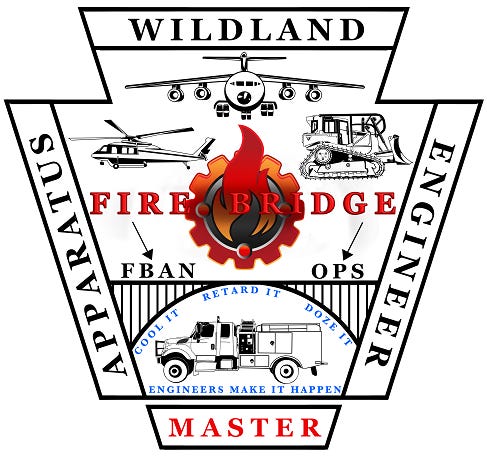Hello, my name is Joseph Moylan, I began working in the fire service in 2007 with a Volunteer Department for a year that included training put on by the State covering the structural and wildland suppression techniques. After a short time, I was introduced to contract fire fighting and was fortunate enough at that time to have an instructor who was also a qualified firefighter from Illinois and had both his State certifications as well as the NWCG qualifications to teach the FFT2 and FFT1 classes as well as ENGB. Also with the Standard S130, 131, 134, 190, 211, 215, 230, 231, 236, 270, 290, I have attained:
FEMA NFA Q-237, 217 & 218 certs.
I then spent 6 years as a contract firefighter being called to fires in California to Colorado, to Las Vegas, Nv. to Idaho. I Operated Type 1 Tactical and Type 2 Support Water Tenders in extremely steep and rough terrain and just about every travel condition imaginable. The most challenging times were while operating in the Idaho and Colorado areas, where, long steep hose-lays were needed to be put in to support firing and holding operations and water supply was critical to the success of those operations. We face these similarities (critical water supply), here in rural Nevada as well, such as where getting water can be a 2-hour or longer turnaround depending on the conditions you’re faced with.
After six years of this, I began working for the US Govt. (BLM Fire) as a “seasonal” operator in the same capacity. I have successfully taught folks coming up the ranks to being an Engine Operator, who, have little or no knowledge of the craft of being a “TRUE” engineer, to giving them advanced knowledge on just what Type 3-6 engines are capable of doing and knowing how to do so safely and competently. Thus I have brought my knowledge to the Government, the Government did not teach me what I know.
What I Teach, is all pump and fire ground hydraulics-related aspects. The most recent is what I call FireBridge and one can visit the wildfireengineer website and select the FireBridge link for more information on that. There are fire ground hydraulics design elements and then there are pump hydraulics elements. Many are not aware of this. I teach heat absorption capacity of water and why that is important on the fire-ground.
Lastly, I was given the nickname of “Doc Hydro”, not of my choosing, yet by coworkers after a “letter of recognition” showed up to my Battalion Chief in 2015, wherein the remote SEAT base manager referenced me as “Captain Waters” because of my ability to determine the flow demands by the number of aircraft, the tank sizes, turn around times and then calculate the needed resources at our local end to match that. All of this was done without ever having seen or set foot on the actual site of the fire. Such was calculated purely, “mathematically”. We launched SEATS every 3 minutes.
I am a fixed-wing pilot as well as a remote pilot. This gives me a mental edge over others in the same capacity, as I can rapidly calculate/estimate helicopter or fixed-wing load capacities, turnaround times, etc. to better set up the logistical supply chain so operations never have to stop (shut down). You want to be waiting for on-air resources, you do not want them waiting on you!!
There is NO such thing as “it Can’t be done” and my motto is Engineers Make it Happen!.
Other personal achievements are that I have attained DZOP, dozer operator qualification as of 2019.
If you have something that you feel would be an excellent topic of instruction for future folks on the fire ground and would like to know more, then email me at hydro@wildfireengineer.com
Why subscribe?
Subscribe to get full access to the newsletter and website. Never miss an update.
Stay up-to-date
You won’t have to worry about missing anything. Every new edition of the newsletter goes directly to your inbox.
Join the crew
Be part of a community of people who share your interests.
To find out more about the company that provides the tech for this newsletter, visit Substack.com.


